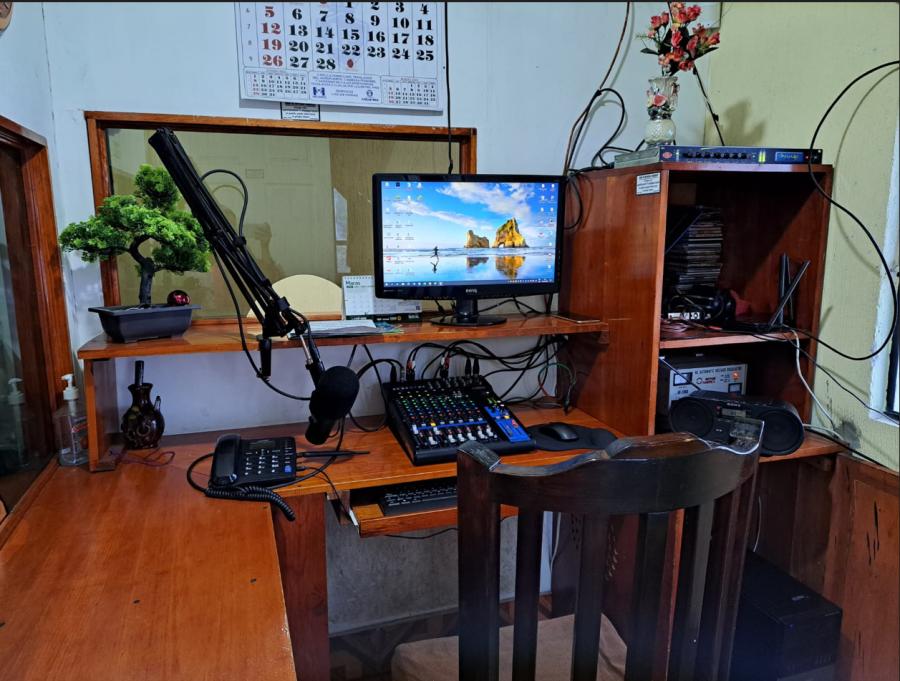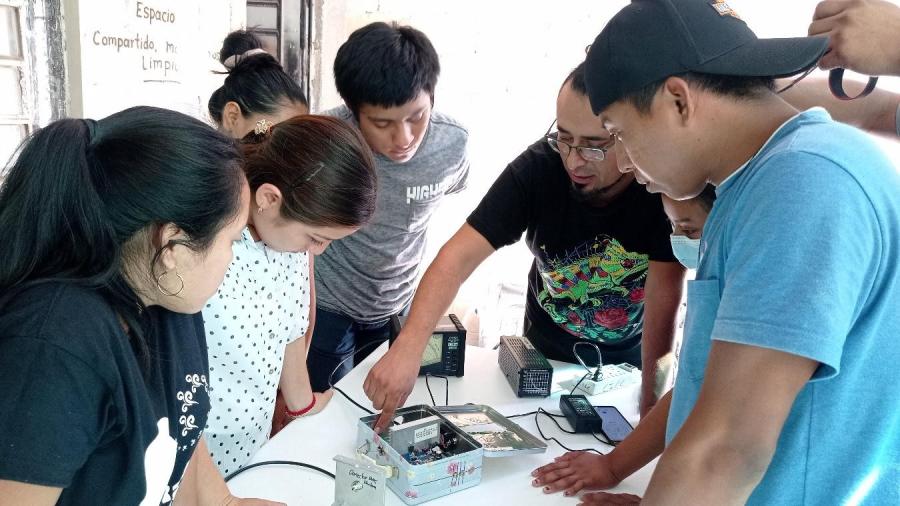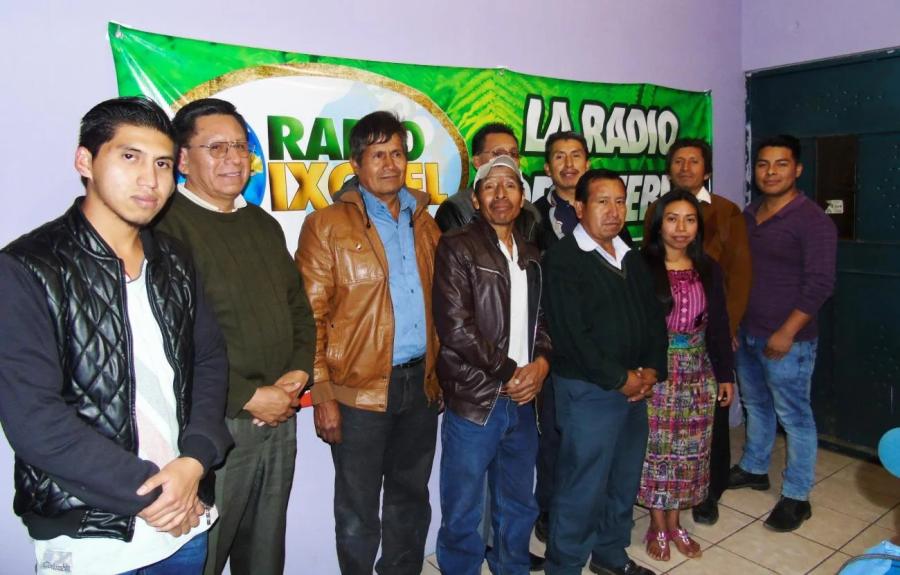According to official government statistics 37% of the Mayan Indian refugees in Mexico have km in the state of Chiapas. These Guatemalans are not, strictly speaking, foreigners. Various cases illustrate a population in which some of the refugees were born in Mexico, went to live in Guatemala as children, and returned as refugees. All along the border there has always been movement back and forth between Mexican and Guatemalan communities.
To move these refugees out of Chiapas now not only runs the risk of their physical demise hut also the death of their ethnic identity through absorption by populations which are not Mayan Indians like those of Chiapas.
Bishop Samuel Ruiz
San Cristobal de las Casas, Mexico
11 July 1984
On April 30, 1984, Mexican newspapers headlined the Minister of the Interior's decision to relocate the approximately 46,000 Guatemalan, Mayan Indian refugees then camped along the Guatemalan border in the state of Chiapas, offering them either homes and garden plots in the state of Campeche or an escort to the Guatemalan border. Pressure to move was initiated unsuccessfully in early June at the highland camps of El Chupadero, Las Delicias and La Gloria de San Caralampio. The next month the first physical resettlement of refugees began in the lowland Lacandon Forest camps of Puerto Rico and Ixcan, and continued in that area through early August. Those living in the approximately 30 camps outside the forest now wait and listen. Such settlements as El Rosario and those near Pujiltic, described below, illustrate these Mayan Indian refugees' migration pattern, successful accommodation and, now, fear of the future.
El Rosario
El Rosario is a relatively small community, about 4 hectares with 15 scattered rough-hewn pine shelters housing approximately 170 people in the Lagos de Montebello region near the Guatemalan border. Like many camps in Chiapas, it is located only a short walk from the border, across which El Rosario's present residents fled four days after learning that the Guatemalan army had massacred - for reasons unknown to the refugees but nonetheless following a pattern familiar to them - more than 300 men, women, and children at nearby Finca San Francisco on 17 July 1982.
After crossing the border, these people first settled in a camp called Santiago del Vertice. Four months later, while working in fields nearby, they fled from an armed patrol of Guatemalan civil patrolmen and soldiers who had crossed the border to attack the camp. About 2 months later (January 20, 1983) a second attack by Guatemalans left two refugees dead and destroyed the camp. A local Mexican landowner then invited part of the population to resettle on a forested portion of his land, alongside a road leading to the border settlement of Carmen Xhan, a community where, in January 1983, 60 Guatemalan refugee families suddenly arrived and were accommodated immediately in Mexican homes.
In 1983, the residents of El Rosario subsisted on food supplied by the UNHCR through the Mexican Commission to Aid Refugees (COMAR) and by the Christian Solidarity Committee of the Catholic Diocese of San Cristobal. In 1984, however, the landowner provided them with six hectares of land where they have planted corn and thus have begun to wean themselves from donated food. Children will attend classes when schools open in the fall. Their parents obtain occasional day labor on nearby farms. Aided by sympathetic Mexicans, some semblance of a normal life is emerging.
Pujiltic
The landowner's generosity in El Rosario is characteristic of the support and hospitality rural Mexicans from Chiapas offer the Guatemalan refugees. Near the sugar refinery of Pujiltic are three small camps, built as wooden row houses - Agua Bendita (pop. 109), Los Pinos (121), and Abasolo (150). In 1982 the residents fled rural violence in the Department of San Marcos, Guatemala, and obtained temporary housing and visas as seasonal workers at coffee plantations near Tapachula. As the harvest drew to a close so did their right to remain in Mexico. However, they were subsequently recruited by members of Pujiltic's sugar cane workers union to help with that harvest, at wages equal to those of experienced laborers.
One of the Mexicans explained that "the biggest help is what they give to us. They needed work and we needed them. At first we worked separately but then we realized that it was better if we put our cuttings together, since we are brothers." These workers not only sympathized with the plight of the refugees, but empathized with their present circumstances. Many of the Mexican cane cutters migrated to Pujiltic from areas further north in Mexico. They said that they too felt like refugees when they first arrived in Chiapas. They even lived in the same sort of barrack-like row houses now occupied by the Guatemalans.
Initially, all of the Guatemalans (approximately 350) settled in a single camp. Health and living conditions were poor; they had brought a measles epidemic with them and they obtained water from open pools polluted by animal feces. Now they are divided into three settlements, each composed of members of the Guatemalan hamlets from which they fled. Wages have enabled each camp to purchase tubing and tap into the local water system. Whereas relief agencies initially provided all of the food, each camp now farms corn and beans on 5-6 hectares provided by the union/ejido members, and each maintains a sizable well-tended vegetable garden adjacent to the settlement. In Augustine support frames for a school which would be finished before classes resumed in the fall had already been constructed. Although the Guatemalans' visas expire in September or October, union officials indicated that they would aid the refugees in obtaining extensions until the harvest begins again in December (ending in May). Like El Rosario, life is beginning to take on a semblance of order for the refugees near Pujiltic.
Yet just as they become established they are told that their tenure is uncertain and that they may be transferred to Campeche. The mere idea of the move is threatening. El Rosario lost a child and an elderly man on a relatively short journey across ecologically familiar terrain. Settling into Pujiltic cost the communities even more lives. The trip to Campeche is longer and the region is described as extremely hot and infested with exotic illnesses. The Indians fear that those who survive the physical relocation will later fall victim to disease. Although several vehicles have arrived at the camps, carrying people who claim to be doctors and who tell them that life will be healthy and bountiful in Campeche, the Indians ask why none of the relocated refugees have returned to describe conditions in Campeche.
The alternative - returning to Guatemala - is, for the moment, equally or less appealing. As of 4 August 1984, fewer then 200 refugees had chosen to participate in the official repatriation program to Guatemala. Most refugees still fear the violence which riddled the Guatemalan countryside. Except for suspect voices on radio broadcasts, none of those yet repatriated has returned to describe present conditions. Only Guatemalan civil patrolmen visit the camps, claiming that the countryside is quiet and that life is safe. Even if it were, the refugees ask, how long will it last and under what conditions? The people of El Rosario said that when they crossed the border they saw the bodies of two mutilated Indian women. Their breasts had been hacked off and their disemboweled infants had been placed in a suckling position. Such imagery is not easily forgotten.
The most common questions asked in the camps are if, when, and why the refugees will be moved? All of those interviewed stated that they wanted only to remain where they were. Yet, they are regularly visited by officials who exhort the Indians to accept relocation; some officials calmly state that the move will be voluntary only, others insist that they will be forced to move if they do not go voluntarily. In addition to government complaints that refugee camps close to the border threaten national security, the most commonly heard argument for relocation is that 46,000 additional residents will strain Chiapas' already limited resources further. This may be true, but Chiapas' Mexican residents do not appear to sense such a threat. On the contrary, most embrace the Guatemalans. The only negative instance was cited by some recently-arrived residents at El Rosario. They had been living alongside Mexicans on the ejido of Obregon until ejido officials denounced their presence to government officials and asked them to clear the camp. Four families returned to Guatemala while the rest resettled in El Rosario. Shortly thereafter, the Guatemalans said, others from Obregon visited and informed them that large bribes had been paid to those local ejido officials who voiced opposition to the presence of the Guatemalans. Other observers cited communities in which, despite bribe offers, Mexicans refused to request removal of the refugees.
These claims have not been verified. Nor, in fact, have many of the assertions and accounts of events which have surrounded Mexico's recent decision to remove the refugees from Chiapas. With few exceptions only Mexican army and immigration officers have observed the transfer or been allowed to visit the refugee camps. Such secrecy invites rumors and permits exaggeration. It also can mask gross human rights violations. On the basis of available information Mexico's treatment of Guatemala's refugees appears to contradict that Contadora Group nation's expressed desire for a peaceful, negotiated settlement to all the violence in Central America. Following economic progress in Chiapas, stabilization of daily life, and proximity with their Guatemalan homeland, the refugees once again face a struggle merely to survive. Those who fled Guatemala since late 1981 do not deserve another upheaval. They too need a peaceful settlement.
Article copyright Cultural Survival, Inc.



